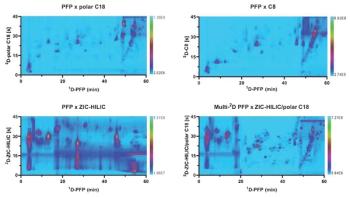
University of Tasmania Researchers Explore Haloacetic Acid Determiniation in Water with capLC–MS
Haloacetic acid detection has become important when analyzing drinking and swimming pool water. University of Tasmania researchers have begun applying capillary liquid chromatography as a means of detecting these substances.
In a new study led by University of Tasmania researchers, capillary liquid chromatography–mass spectrometry (capLC–MS) was used to determine haloacetic acids (HAAs) in tap water and swimming pool water. Their findings were published in the Journal of Chromatography A (1).
While drinking water disinfection continues to be vital in ensuring overall life quality and safety, an inevitable consequence of this process, which stems from disinfections like chlorine (Cl2) interacting with organic matter, is the creation of disinfection byproducts (DBPs). Those who drink water containing DBPs in excess can experience problems with vital organs and increase their risks of cancer (2). The second largest category of halogenated DBPs in water are haloacetic acids (HAAs). HAAs contain high solubility and minimal volatility, which allows them to easily pass into the bloodstream from the gastrointestinal tract. Further, HAA exposure has been linked to colorectal and bladder cancers, along with reductions in sperm count and motility.
There have been extensive investigations into HAA presence in drinking water, but studies on their occurrence in swimming pool waters only emerged in 1999 (3). HAAs are known to be extremely common in swimming pool waters due to their low volatility. Selecting an analytical method is critical for HAAs monitoring, as aggregated HAAs data usually obscures distinctions between individual HAAs, some of which are more concerning than others. Liquid chromatography (LC) coupled with electrospray ionization-mass spectrometry (ESI-MS) has gained popularity as an analytical method for HAAs monitoring in recent years. Further, capillary LC (capLC), wherein the column size, flow rate, and injection volumes are reduced by a factor of 10 to 100, is also growing more popular.
In this study, a compact capLC system was coupled with two small- footprint and portable single quadrupole mass spectrometers for HAA analysis in water samples. The portable capillary liquid chromatograph was equipped with a polar-modified C18 column (100 × 0.5 mm, particle size: 3 μm) and utilized gradient elution with 0.05 % formic acid and methanol to selectively separate and quantify the 9 HAAs (HAA9) recommended for monitoring by United States Environmental Protection Agency (U.S. EPA). These HAAs include:
- Chloroacetic acid (CAA)
- Bromoacetic acid (BAA)
- Dichloroacetic acid (DCAA)
- Dibromoacetic acid (DBAA)
- Bromochloroacetic acid (BCAA)
- Trichloroacetic acid (TCAA)
- Dichlorobromoacetic acid (DCBAA)
- Dibromochloroacetic acid (DBCAA)
- Tribromoacetic acid (TBAA)
A portable capLC-electrospray ionization-mass spectrometry (capLC-ESI-MS) system was used alongside a single quadrupole mass analyzer to monitor the HAA9. Direct injection was used to analyze HAA9 in tap and swimming pool water using the system.
The limits of detection (LODs) attained using the capLC-MS system were below the maximum contamination level (MCL) at 60 µg/L, which was set by the EPA for the five most common HAAs in drinking water (HAA5). The chromatographic separation of HAA9 was done using a polar-modified C18 column and gradient elution prior to ESI-MS detection. This represents the first capLC-ESI-MS method for all HAA9 quantitation using a single quadrupole mass analyzer, all without using ion pairing agents. Rather than being limited to HAA5 monitoring, the method proved compatible with U.S. EPA recommendations for HAA9 monitoring. The notable sensitivity attained enabled the analysis of tap water and swimming pool water without applying enrichment protocols.
References
(1) Mikhail, I. E.; Lam, S. C.; Coates, L. J.; et al. Determination of Haloacetic Acids in Municipal Tap Water and Swimming Pool Water Using Portable Capillary Liquid Chromatography–Mass Spectrometry. J. Chromatogr. A 2025, 1751, 465941. DOI:
(2) Disinfection Byproducts–Chlorination of Drinking Water. Washington State Department of Health 2025.
(3) Martinez, D.; Borrull, F.; Calull, M. Evaluation of Different Electrolyte Systems and On-Line Preconcentrations for the Analysis of Haloacetic Acids by Capillary Zone Electrophoresis. J. Chromatogr. A 1999, 835 (1–2), 187–196. DOI:
Newsletter
Join the global community of analytical scientists who trust LCGC for insights on the latest techniques, trends, and expert solutions in chromatography.




